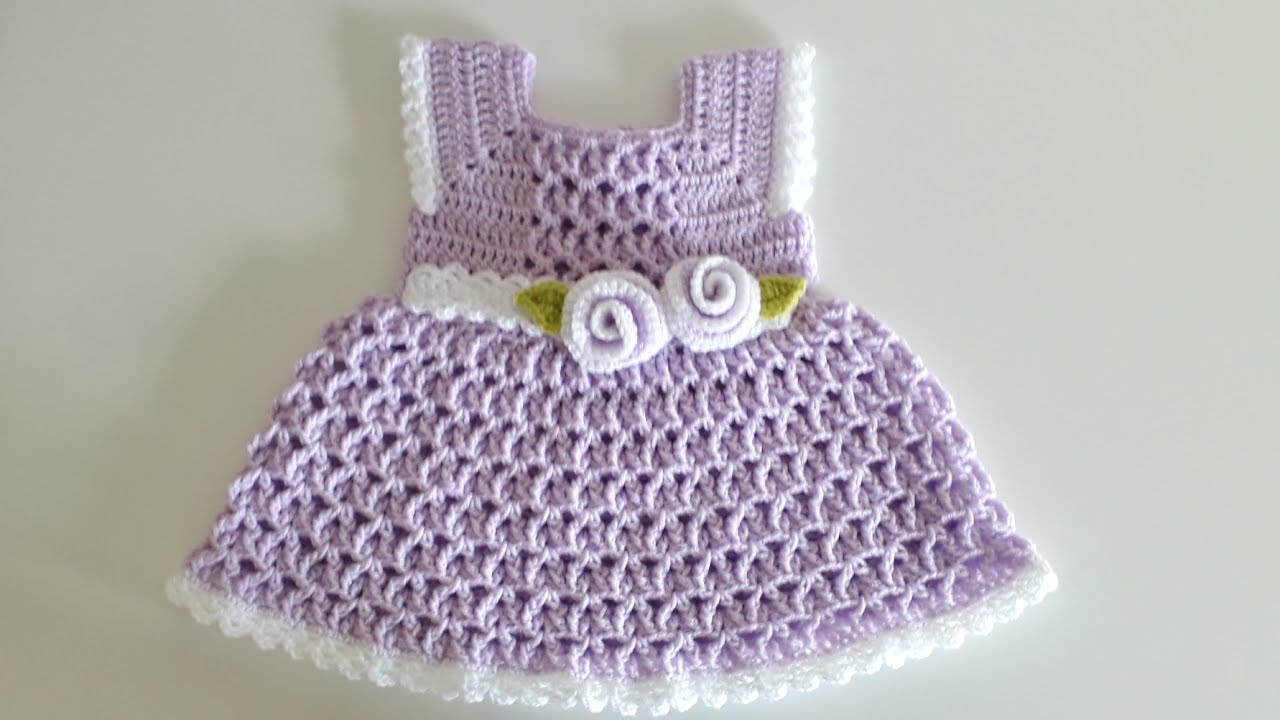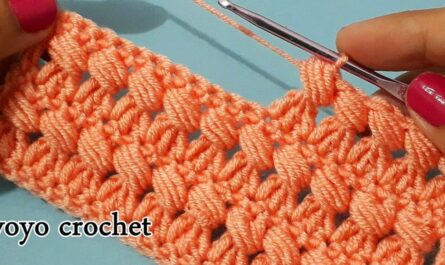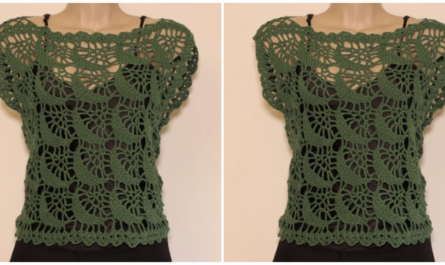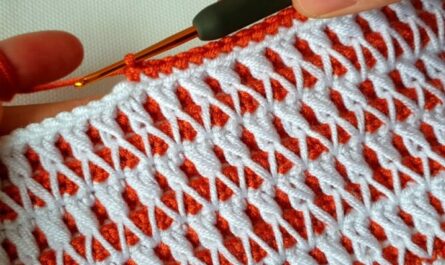As the days grow longer and the sun shines brighter, there’s nothing sweeter than dressing a baby in light, airy garments. A handmade crocheted summer dress embodies charm, comfort, and a delicate beauty that store-bought items simply can’t replicate. With careful yarn and stitch choices, you can create a breathable, adorable dress perfect for sunny outings, family gatherings, or just delightful daily wear.
This detailed guide will walk you through the essential steps and considerations for crocheting a beautiful and practical summer dress for the little one in your life.
Why Crochet a Summer Dress for a Baby?
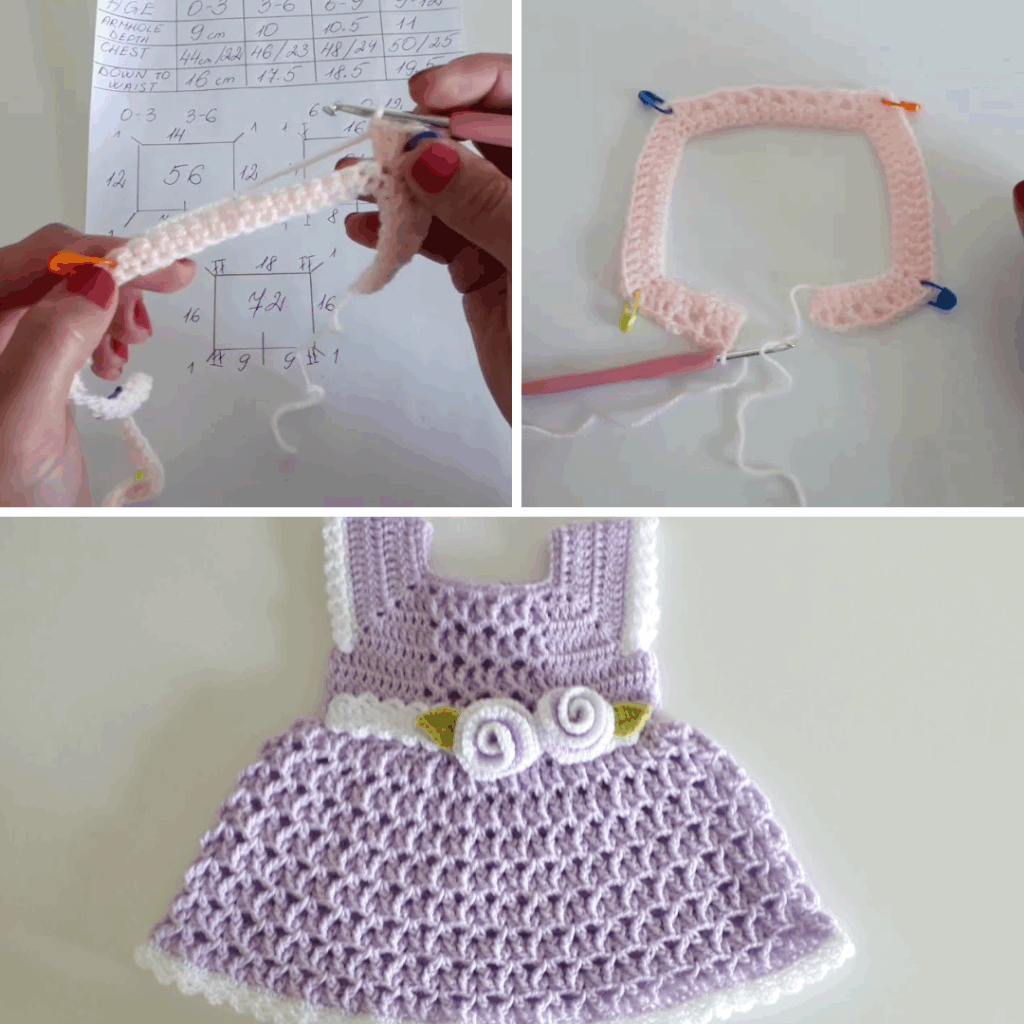
- Breathable & Lightweight: Unlike heavier winter garments, a summer dress utilizes natural fibers and open stitch patterns that allow air to circulate, keeping baby cool and comfortable.
- Comfortable & Soft: Choosing the right yarns ensures the dress is gentle against delicate baby skin, preventing irritation.
- Adorable & Photogenic: The intricate details of crochet, combined with the delicate nature of a baby dress, make for truly stunning and memorable outfits.
- Personalized & Unique: Select from a rainbow of summer-inspired colors, incorporate charming openwork designs, or add custom embellishments to create a one-of-a-kind piece.
- Heirloom Potential: A beautifully handmade dress becomes a cherished keepsake, often passed down through generations.
- Skill Building: It’s an excellent project to practice delicate stitches, learn shaping for garments, and master pretty edgings.
- Thoughtful Gift: A crocheted summer dress is a heartfelt and loving gift for baby showers, first birthdays, or any special occasion.
Key Elements of a Summer Dress:
To ensure your baby’s summer dress is both comfortable and charming, consider these design elements:
- Yoke/Bodice: The upper part of the dress. Often worked top-down (from the neckline downwards) for seamlessness and easy shaping, providing a neat fit around the chest.
- Skirt: The lower, flowing part of the dress. This is where openwork, lace patterns, or a full A-line shape truly shine, promoting air circulation.
- Sleeve Length: Ideal for summer are sleeveless designs, tiny cap sleeves, or delicate flutter sleeves that offer a hint of coverage without warmth.
- Neckline: Should be comfortable, wide enough for easy dressing, and non-restrictive around baby’s neck.
- Closure: Simple closures like buttons on the shoulders or down a small back opening make dressing and undressing a breeze.
- Lightweight Fabric: Achieved through specific yarn types and the use of open, airy stitch patterns.
- Embellishments: Simple edgings, a delicate ribbon woven through a row, or a small embroidered detail can add a perfect finishing touch.
Choosing Your Tools & Materials:
The right supplies are paramount for creating a soft, safe, and beautifully draped summer dress.
- Yarn: The Essence of Summer Comfort!
- Fiber (Crucial for Summer):
- 100% Cotton: The quintessential summer fiber. It’s breathable, absorbent, soft, durable, and easy to wash. Look for mercerized cotton for a slight sheen and better stitch definition.
- Bamboo Blends (e.g., Bamboo/Cotton, Bamboo/Rayon): Exceptionally soft, with a beautiful silky drape and excellent moisture-wicking properties, making them very breathable for warm weather.
- Linen Blends (e.g., Linen/Cotton): Strong, highly absorbent, and incredibly breathable. Linen softens beautifully with each wash, developing a lovely drape.
- Avoid: Wool, alpaca, heavy acrylics, and overly bulky yarns. These are too warm and heavy for a summer garment.
- Weight:
- Fingering (Category 1) or Sport (Category 2): Ideal for very lightweight, delicate, and airy dresses. These will create a fine fabric and often feature intricate lace patterns.
- DK (Double Knitting / Category 3): Can be used for a slightly more substantial but still breathable dress, especially if worked with an open stitch pattern.
- Color Palette: Embrace the vibrancy of summer! Think crisp whites, creams, soft pastels (mint, lavender, baby blue, blush pink), bright yellows, coral, or even gentle variegated yarns that mimic sunny days.
- Quantity: Varies significantly by size and yarn weight/length. For a 0-6 month dress, expect 200-350 yards; for 6-24 months, 350-600+ yards. Always check your chosen pattern’s recommendations.
- Fiber (Crucial for Summer):
- Crochet Hook:
- Consult your chosen yarn label for a suggested hook size (e.g., 2.5mm, 3.0mm, 3.5mm, 4.0mm, 4.5mm).
- For Summer Garments: You might choose a hook size slightly larger than typically recommended for your yarn weight. This creates a looser fabric with more drape and breathability, enhancing the “airy” feel. Your actual hook size will be determined by achieving the correct gauge for your pattern.
- Other Notions:
- Stitch Markers: Essential for marking raglan lines, the beginning of rounds, or specific shaping points.
- Tapestry Needle: For neatly weaving in all yarn ends and sewing any minor seams.
- Scissors.
- Small, Flat Buttons: 2-3 buttons for shoulder or back closures. Choose flat buttons for baby’s comfort.
- Sewing Needle & Matching Thread: To securely attach buttons.
- Ribbon (Optional): A thin satin or grosgrain ribbon can be woven through an openwork row on the bodice or skirt for a decorative touch.
- Blocking Mats & T-Pins: (Highly recommended) For shaping and achieving a professional, open, and delicate finish.
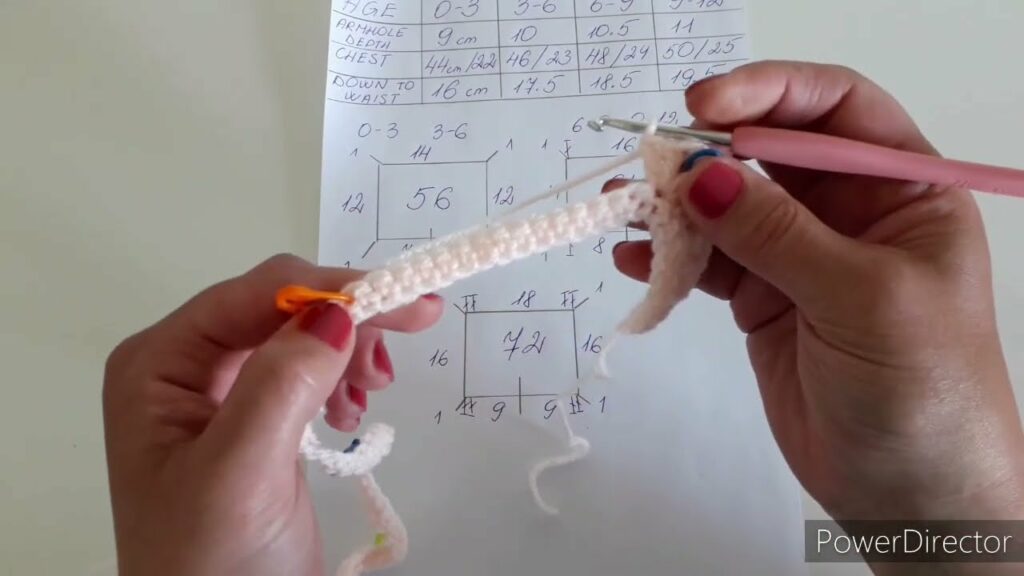
Understanding Sizing & Gauge (ABSOLUTELY CRITICAL for Garments!)
Accurate sizing is paramount for a comfortable and beautifully fitting dress, especially one that will drape gracefully.
General Baby Dress Sizing (Approximate Measurements):
| Size | Approx. Chest Circ. | Approx. Finished Dress Length (Shoulder to Hem) | Approx. Armhole Depth (Top of Shoulder to Underarm) |
|---|---|---|---|
| Newborn | 16 inches | 12-13 inches | 3.5 inches |
| 0-3 Months | 17-18 inches | 13-14 inches | 4 inches |
| 3-6 Months | 18-19 inches | 14-16 inches | 4.5 inches |
| 6-12 Months | 19-20 inches | 16-18 inches | 5 inches |
| 12-18 Months | 20-21 inches | 18-20 inches | 5.5 inches |
| 18-24 Months | 21-22 inches | 20-22 inches | 6 inches |
Export to Sheets
Disclaimer: These are general averages. Always refer to the specific pattern’s measurements and sizing chart.
How to Make a Gauge Swatch (Do NOT Skip This Step!):
- Chain: Chain about 25-30 stitches, plus any turning chains (e.g., ch 3 for dc) as per your chosen main stitch pattern for the bodice/skirt.
- Work: Crochet a square of at least 6×6 inches (15×15 cm). A larger swatch provides a more accurate measurement.
- Wash & Block: Fasten off your swatch. Crucially, wash and block your swatch exactly as you plan to treat the finished dress. This step relaxes the fibers and reveals the true stitch size and drape after washing, which can change significantly, especially with natural fibers and openwork.
- Measure: Once dry, lay the swatch flat. Place a ruler over the center. Count how many stitches fit within 4 inches (10 cm) and how many rows fit within 4 inches (10 cm).
- Adjust:
- If you have more stitches per inch than your pattern (or desired gauge) states (your work is too tight), go up half a hook size and re-swatch.
- If you have fewer stitches per inch than your pattern states (your work is too loose), go down half a hook size and re-swatch.
- Repeat until your gauge precisely matches.
General Stitch Patterns for a Summer Dress:
- Yoke/Bodice (for structure and fit):
- Single Crochet (sc): Creates a dense, firm fabric, good for neckbands and button plackets.
- Half Double Crochet (hdc): Offers a good balance of density and drape, suitable for a comfortable bodice.
- Double Crochet (dc): Works up quickly, creates a softer fabric, suitable for a more relaxed bodice.
- Skirt (for breathability and elegance):
- Shell Stitch: (e.g.,
(5 dc)in one stitch) Creates beautiful, flowing, and delicate openwork, perfect for a skirt. - V-Stitch: (
(dc, ch 1, dc)) A simple yet elegant openwork pattern that’s easy to increase. - Granny Stripe/Square: Can be adapted into rows for a light, airy, and classic look.
- Filet Crochet: Using
dcandchspaces to create open grids or even picture patterns. - Lace/Mesh Stitches: Various combinations of chains and taller stitches (dc, tr) can create beautiful, openwork fabrics.
- Shell Stitch: (e.g.,
- Edging (for a polished finish):
- Picot Stitch: (
(ch 3, sl st in 3rd ch from hook)) Creates a pretty, decorative bobble edge. - Simple Shell Edging: Small shell stitches (
(3 dc)or(5 dc)in one space) for a delicate ruffle. - Single Crochet (sc): For a neat, clean finish.
- Picot Stitch: (
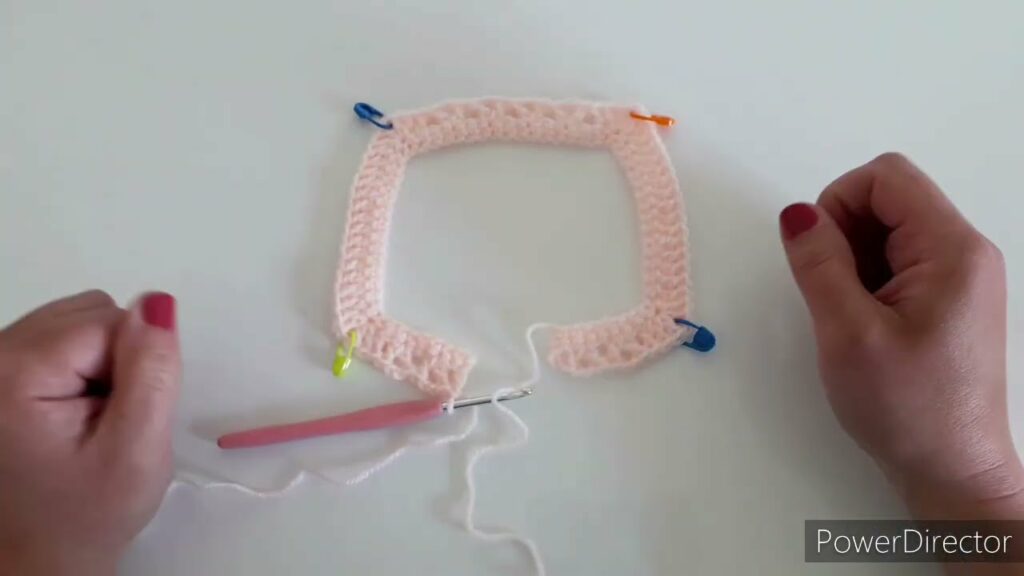
Step-by-Step Construction: The Top-Down Baby Summer Dress (Raglan Yoke)
This outline describes a popular and practical construction method that creates a seamless garment from the top down. This is a general guide to the methodology; for precise stitch counts, specific increase/decrease rates for different sizes, and unique design details, you MUST use a detailed crochet pattern.
Phase 1: The Yoke (Top-Down, Raglan Shaping)
This forms the neckline, shoulders, and upper chest, working from the top down.
- Step 1.1: Starting Chain & Neckband/Opening
- Foundation Chain: Chain the number of stitches specified by your pattern for the neckline circumference.
- Neckband/Shoulder Opening: Work 2-4 rows in a stable stitch like sc or hdc. If your pattern includes a shoulder opening for easy dressing (common for baby dresses), you’ll work a section flat and incorporate buttonholes on one side (e.g.,
ch 2, skip 2 stitches, then work into the chain space on the next row).
- Step 1.2: Setting Up Raglan Yoke Divisions
- First Yoke Row (Raglan Setup): This row divides your total stitches into: Back Panel, Sleeve 1, Front Panel, Sleeve 2. You will have 4 raglan corners where all shaping increases occur.
- Work your chosen yoke stitch (e.g., dc) for the Back Panel. At the first raglan corner, work your increase (e.g.,
(dc, ch 2, dc)or(2 dc, ch 1, 2 dc)). Place a stitch marker (SM) in the chain space. Continue this pattern for Sleeve 1, Front Panel, Sleeve 2, with increases at each of the 4 raglan corners. Turn.
- Step 1.3: Continuing Yoke Increases
- Subsequent Yoke Rows: Continue working your yoke stitch across, and work your specified increase into each of the 4 raglan spaces from the previous row. Move your stitch markers up to the new increase spaces. Turn.
- Continue working these increase rows until the yoke measures the correct depth from the top of the neckline to the underarm for your chosen size.
Phase 2: Separating for Body (Sleeveless/Cap Sleeves)
Once the yoke is the correct depth, you’ll separate the stitches to form the armholes and begin the main body of the dress.
- Separation Row:
- Work stitches for the Back Panel.
- Work into Raglan Corner 1.
- Skip Sleeve 1: Place all stitches of Sleeve 1 (the stitches between Raglan Corner 1 and Raglan Corner 2) onto a piece of scrap yarn or a stitch holder.
- Underarm Chain (Optional): Chain 1-2 stitches (this creates a little extra room at the underarm).
- Work into Raglan Corner 2.
- Work stitches for the Front Panel.
- Work into Raglan Corner 3.
- Skip Sleeve 2: Place all stitches of Sleeve 2 onto a holder.
- Underarm Chain (Optional): Chain 1-2 stitches.
- Work into Raglan Corner 4.
- Join in the Round: Join with a sl st to the first stitch of the row to form a continuous circle for the body of the dress.
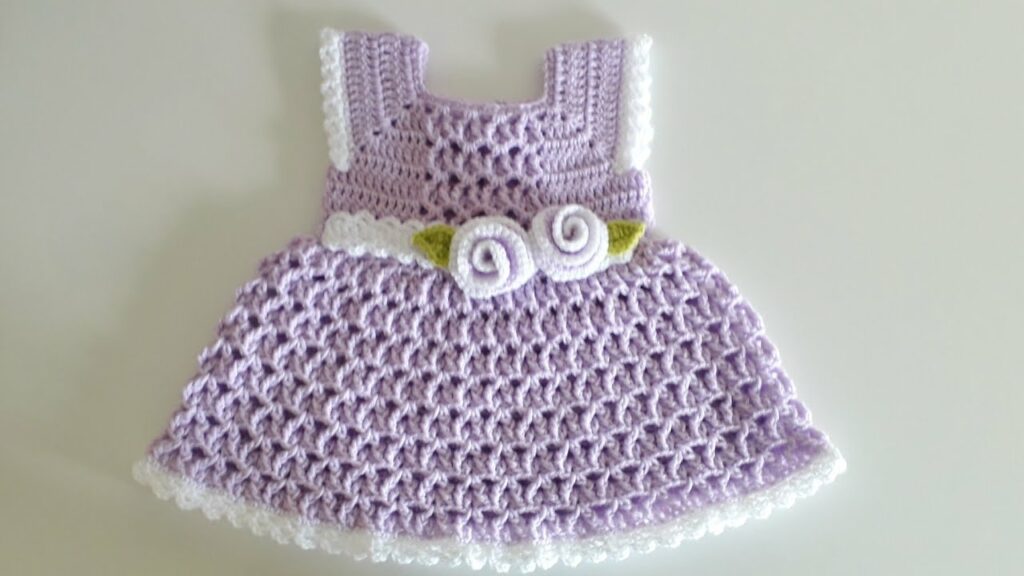
Phase 3: The Bodice
This is the short upper part of the dress before the skirt flares out.
- Bodice Rows/Rounds: Work 2-4 rounds (or rows, if keeping a back opening) using a denser stitch like sc, hdc, or dc. This section provides stability before transitioning to the openwork skirt.
Phase 4: The Skirt
This is where the “summer” feel truly comes into play with openwork.
- Transition to Openwork: On the first skirt row, you’ll typically make a significant increase to create the flare and transition to your chosen openwork/lace stitch pattern (e.g., shell stitch, V-stitch, or mesh). Your pattern will guide you on how to execute this increase while starting the new stitch pattern.
- Skirt Rows/Rounds: Continue working in rounds using your chosen openwork pattern.
- Shaping (Flare): Periodically increase stitches evenly around the skirt (e.g., every few rows, or at set intervals within the lace pattern repeat) to ensure the skirt flares out gracefully and is not too restrictive.
- Length: Continue working until the dress reaches the desired length (e.g., knee-length, mid-calf, or even a mini-length for newborns).
Phase 5: Sleeves (Optional – Cap/Flutter Sleeves)
If you chose to add small sleeves rather than leaving it sleeveless:
- Attach Yarn: Attach yarn to the center underside of one armhole opening (where your underarm chain was).
- Work Rounds: Pick up stitches evenly around the armhole. Work a few rounds of your chosen sleeve stitch (e.g., a simple shell stitch for a flutter sleeve, or sc/hdc for a cap sleeve).
- Finish Edging: Add a pretty edging to the sleeve opening (e.g., picot or sc).
- Fasten off. Repeat for the second sleeve.
Phase 6: Edging & Finishing Touches
These final steps add polish and functionality.
video tutorial part 1
- Neckline Edging: Add a neat edging around the entire neckline. This could be a simple round of sc, a round of reverse single crochet for a rope-like edge, or a decorative picot stitch.
- Armhole Edging: If your dress is sleeveless, add a matching neat edging (sc or decorative) around the armhole openings.
- Hem Edging: Finish the bottom of the skirt with a complementary decorative edging. This could be a larger shell stitch, a series of picots, or simply a neat round of sc.
- Weave in All Ends: Using your tapestry needle, meticulously weave in every single yarn tail. Secure them firmly by weaving into existing stitches in different directions. This is crucial for a neat, durable, and safe finish.
- Attach Buttons: Securely sew any buttons to the shoulder or back opening, aligning them precisely with the buttonholes you created. Double-check their security.
- Ribbon (Optional): Weave a thin satin or grosgrain ribbon through a specific row of openwork on the bodice (e.g., a row of dc and ch spaces) to create a decorative tie or belt effect.
- Blocking (ABSOLUTELY CRUCIAL for Drape and Finish!):
- Gentle Wash: Gently hand wash the finished dress (or machine wash on a delicate cycle if your yarn allows) in cool water with a mild, baby-safe detergent.
- Remove Excess Water: Gently squeeze out excess water (do not wring or twist). Roll the dress in a clean, dry towel and press firmly to absorb as much moisture as possible.
- Shape & Dry: Lay the dress flat on blocking mats. Gently stretch and shape it to the correct finished dimensions for its size, smoothing out any unevenness. This step is vital for openwork patterns, as it opens up the lace and enhances drape. Use rust-proof T-pins to hold the shape firmly.
- Air Dry Completely: Allow the dress to air dry completely. Blocking truly transforms the fabric, relaxing stitches, evening out tension, opening up your lace, and giving your summer dress a beautifully polished, professional appearance.
Tips for Summer Dress Success:
- Yarn Choice is KEY: Prioritize breathable, soft, and absorbent natural fibers for comfort in warm weather.
- Gauge for Drape: Don’t be afraid to use a hook that gives you a slightly looser fabric than typical for excellent drape and an airy feel.
- Embrace Openwork: Let the beauty of lace and open stitches shine; they are perfect for summer and add visual interest.
- Comfortable Closures: Ensure neck and armhole openings are generous enough and closures are easy to use.
- Safety First: Securely attach all buttons. Avoid any small, detachable embellishments that could pose a choking hazard.
Care Instructions for Your Handmade Dress:
- Always follow your chosen yarn label’s specific care instructions.
- Reshape and Lay Flat to Dry: Gently reshape the dress while wet and lay it flat on a clean towel or drying rack to air dry completely. Do not hang, as this can stretch the fabric and distort its shape.
video tutorial part 2 ;
Creating a crocheted summer dress for a baby is a delightful journey, culminating in a beautiful, comfortable, and personalized garment that’s perfect for warm days and precious moments. Enjoy the process of stitching sunshine into every thread!
